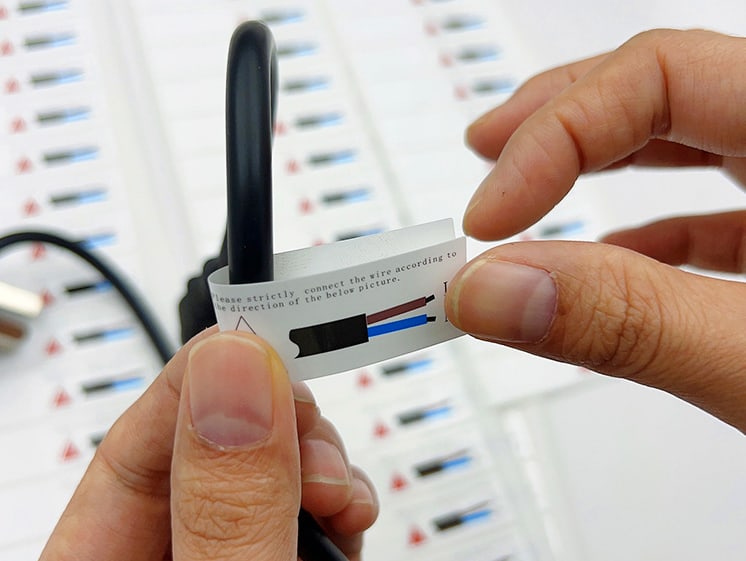In an age where technology infiltrates every aspect of our lives, the accuracy and organization of cables and conductors cannot be overstated. These essential components form the backbone of our communication and electrical systems, and correctly labelling them is critical for both safety and functionality. Understanding how these labels are applied and maintained is vital for professionals in the field.
Cables and conductors are labelled according to industry standards and regulations using durable, legible labels that contain critical information such as wire type, voltage rating, and circuit details. These labels are applied using specialized tools like wire labeling machines, ensuring consistent and compliant marking across all installations.
Continuing to explore the complexities behind this essential practice will not only benefit those directly involved in electrical and communications engineering but also enhance the overall safety and efficiency of modern infrastructures.

Introduction to Cable and Conductor Labelling
When we think about setting up or maintaining an electrical system, the importance of properly labelled cables and conductors might not be the first thing that comes to mind. However, the labelling of these components is crucial for safe electrical installations and maintenance.
It allows technicians to quickly identify circuits, understand the capabilities and limitations of each cable, and ensure that all connections are made correctly.
The process of labelling involves several standards and materials that can withstand the environments they are exposed to, such as heat, cold, and moisture. Professional-grade labels made from durable materials are crucial because they must remain legible for the life of the cable.
The information on a label typically includes the wire type, voltage rating, and destination or circuit information. Implementing a robust labelling system often involves the use of a specialized wire labeling machine, which can print and apply labels quickly and consistently, ensuring that every wire and cable is clearly marked according to specifications.
Standards and Regulations in Labelling
Adhering to standards and regulations is not only a matter of organizational convenience but a legal requirement in many areas. Different countries and industries may have specific coding systems and labelling requirements.
For example, in the United States, the National Electrical Code (NEC) provides guidelines on how electrical wiring must be labelled. These regulations help ensure that the installations are safe, reduce the risk of electrical fires, and simplify maintenance and troubleshooting procedures.
In-depth understanding of these standards is essential for anyone involved in the design, installation, or maintenance of electrical systems. The labels must be resistant to the environmental conditions they will face, such as ultraviolet light, extreme temperatures, and exposure to chemicals.
This ensures that the labels remain legible throughout the service life of the cable. Compliance with these standards often involves periodic audits and updates to labelling practices as regulations change, which underscores the importance of using adaptable and scalable tools like the wire labeling machine for ongoing compliance.
Technological Innovations in Labelling
As with many fields, technology plays a significant role in improving the efficiency and accuracy of cable and conductor labelling. Modern wire labeling machines are capable of printing high-resolution tags that are durable and compliant with industry standards.
These machines can handle a variety of label materials and adhesives, offering customizable options for different applications.
Another interesting development in the field of cable labelling is the integration of RFID technology. RFID tags can be embedded in labels, allowing for the remote identification and tracking of cables.
This technology is particularly useful in complex installations, such as data centers or industrial plants, where tracking the vast number of cables without physical contact can save significant time and reduce human error.
Conclusion
The meticulous labelling of cables and conductors is a critical aspect of electrical and communication system safety and efficiency. By adhering to standards and utilizing the latest technology, professionals can ensure that every component is properly identified and that the entire system is easier to manage and maintain.
As technologies evolve, so too will the methods and tools used in cable labelling, such as wire labeling machines and potentially bottle labeling machines adapted for specific industrial applications, highlighting the importance of keeping current with technological advancements and regulatory changes.
You may be interested:
- What are the different types of cable tagging?
- What is the best way to label network cables?
- What is cable and wire identification?
- Why is labeling cables important?






